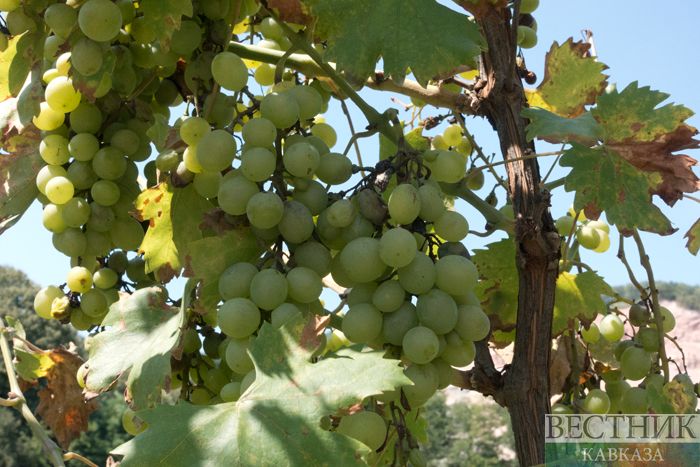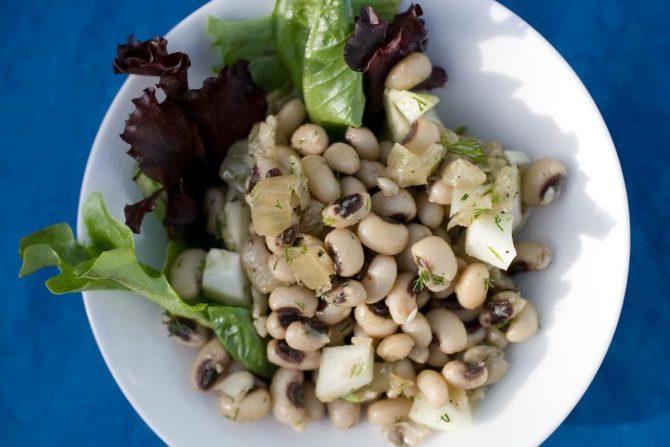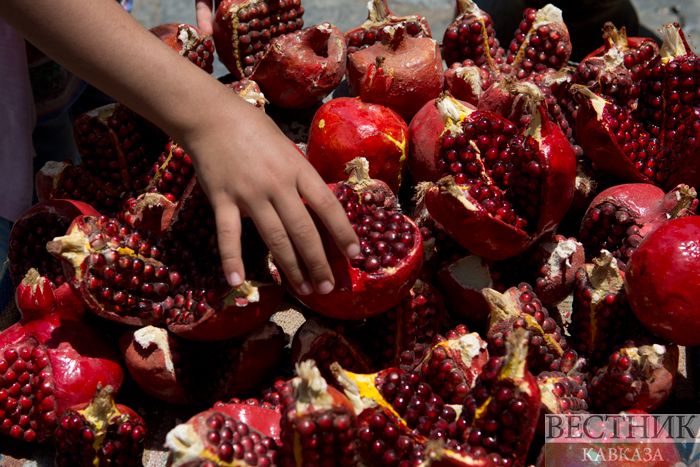You probably strongly associate New Year’s Eve with Champagne (for good reason), but that’s not the only food-centric tradition that exists to ring in the coming year. Many cultures have food customs designed to bring in luck, health, and happiness before and after the clock strikes midnight. Chowhound reports in its article 6 New Year’s Food Traditions from Around the World on a few lucky new year’s foods that you may not have heard of.
Grapes
Eating 12 grapes at midnight (one to symbolize each month of the coming year) is a tradition that originated in Spain in the late 19th century and is still practiced today. Chowing down on a grape with a wish for each coming month is said to set you up for a year of good luck. The jury is still out on whether drinking grapes (in the form of vino) has the same effect, though, so it’s a better bet to reach for fruit instead of your wine glass at the stroke of midnight.

Black-Eyed Peas
In the U.S., particularly in the southern parts of the country, black-eyed peas are thought to bring wealth in the coming year. Often served with ham, which also has positive connotations (more on that later), this dish definitely deserves a spot on your table on New Year’s Day.

Soba Noodles
Toshikoshi Soba is a traditional noodle dish enjoyed in Japan on Dec. 31 to help usher in the following year. Because they’re easy to cut through, the noodles are meant to symbolize breaking off bad luck from the previous year, while the long noodles represent a lengthy (and hopefully healthy!) life.
.jpeg)
Pomegranate
In Turkey and Greece, there exists one tradition where the food isn’t exactly eaten. As midnight nears, revelers smash a pomegranate on the floor near the doorstep—the harder the better. The more pieces the fruit, which represents fertility and prosperity, breaks into, the more good fortune will come your way as the calendar flips.

Vasilopita
Commonly served in Greece and the surrounding area, vasilopita is a cake that contains a hidden coin or bauble in the baked good. Whoever ends up with the item in their slice can expect a prosperous next 12 months, while the ritual of slicing the cake for those gathered is meant to bring good luck to the household for the coming year.
Pig
Since pigs typically “root forward,” representing forward motion or advancement, pork, ham, and roasted pig are popular New Year’s choices for a number of cultures around the globe. In Cuba, families gather around a roasted pig on a spit for eating, dancing, and celebrating together. In Austria, suckling pig is the centerpiece of the New Year’s Day meal, representing good fortune in the coming year. Pig shaped trinkets, sometimes called Glücksschwein, are also common treats in Germany, Austria, and the neighboring region.
.jpeg)
***
And two to skip…
On the flip side of the coin, there are two categories of foods that are probably better to skip on this holiday. You’ll want to skip chicken, because they “scratch backwards” for food (which could symbolize having to scrounge in the coming year) and have wings (which means your luck could fly away).
.jpeg)
Though you might be hankering for a fancy meal as “Auld Lang Syne” plays in the background, lobster shouldn’t be on the menu. Because these guys move sideways or backwards, not forward, eating it on New Year’s could lead you to misfortune or setbacks in the coming year.
.jpeg)
The more you know.






